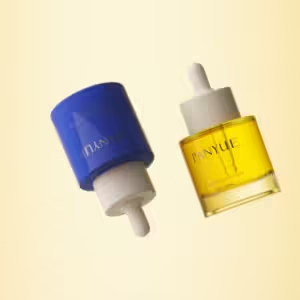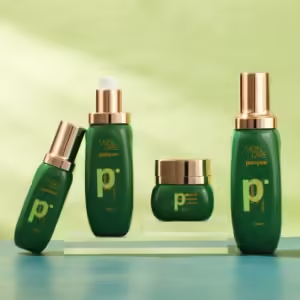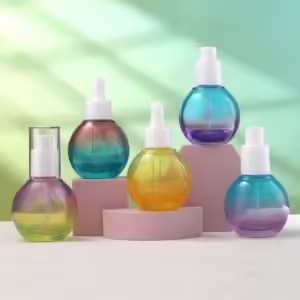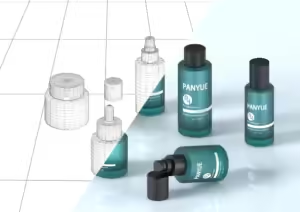In the world of skin care, UV-resistant glass packaging is more than a simple design, it’s a scientific approach to protecting sensitive formulas. Studies have shown that UV exposure can degrade active ingredients like vitamin C and retinol by 60% within a few weeks, so choosing the right glass material and color is critical to maintaining product efficacy and shelf life.
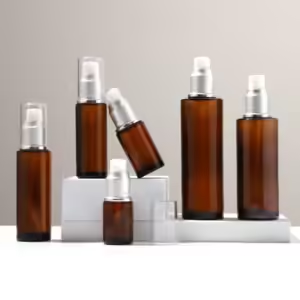
How Dark and Amber Glass Blocks UV Rays?
The color of glass isn’t just aesthetic—it’s a filter against specific light wavelengths:
– Amber Glass: Blocks 90% of UVB and UVA (up to 450nm) and is suitable for photosensitive ingredients such as salicylic acid, essential oils, etc.
– Cobalt Blue/Green Glass: Filters shorter UV wavelengths (up to 350nm) and is commonly used for essential oils and fragrances.
– Clear Glass: Minimal UV protection. Requires secondary packaging (e.g., opaque box) or UV-blocking coating.
The Science Behind the Color: Amber glass contains iron oxide additives that absorb UV light and act as a “shield,” preventing the energy from the photons from reaching the product.
Why Some Brands Still Use Clear Glass?
While clear glass lacks inherent UV protection, brands opt for it.
-Showcase product color (e.g., vibrant toners).
-Pair with airless pumps or opaque outer packaging.
-Use UV-filtering additives in the formulation itself.
Trade-Off: Clear glass requires stricter storage guidelines (e.g., “keep away from sunlight”) and shorter expiration dates.
Choosing the right UV glass for your product
– Ingredient sensitivity: Vitamin C and natural oils require amber or dark glass.
– Consumer use cases: Travel-size products may require durable borosilicate glass.
– Sustainability: Recyclable amber glass meets the requirements of eco-friendly brands.


